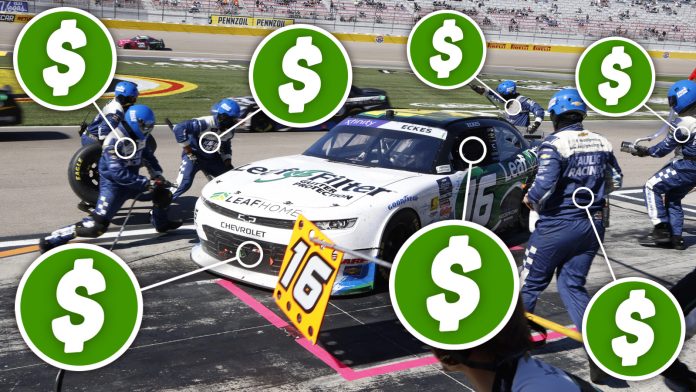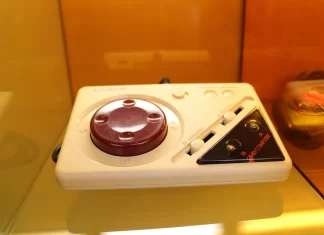There’s been a lot of discussion online lately about the cost of racing, especially with two teams currently suing NASCAR, claiming it’s a monopoly that suppresses earnings. To better understand how a series like NASCAR looks, follow me on a deep dive into what it actually costs to run a team based on my experience as a crew chief in the NASCAR Xfinity Series.
To give a better look at what it would take you to operate a team, I’m not going to be looking at the powerhouse teams like JR Motorsports or Joe Gibbs Racing, both of which have manufacturer support and large sponsors. In this piece, I’m going to be examining the economics of the mid-pack. These are the teams that run 15th to 25th on a weekly basis and celebrate when they bring home a Top 10 finish. The teams that put the average in average finish. What exactly is the bare minimum cost of bringing a car to the race track week in and week out that is capable of finishing inside the Top 20?
![]()
The standard 2025 purse for the NASCAR Xfinity series is $1,651,939. For Mexico City and Championship weekend, the purse is slightly higher at $2,151,939. The season opener in Daytona pays even more with a purse of $3,762,952. In total, the posted race awards for the 2025 Xfinity Series season are $57,625,000, not including the end-of-year points fund.
With 38 spots available in every race, this would equate to $1,516,447 per team if it were shared evenly. Dividing this by 33 races provides $45,952 per team per race. Obviously, teams up front earn more and teams in back earn less, but this is good enough to make a rough ballpark estimate for the average weekly take-home prize money of an average-performing team.
(Note: This purse estimate is a bit on the high side as the race prize money is not scaled linearly. Race purses are not public information, but keep in mind that the per-race figure above would put a team very securely into the Top 20 in owner points.)
We can begin by breaking down costs into three categories: fixed, semi-fixed, and variable. In the fixed column, we have things like payroll and engines. Semi-fixed costs are slightly less predictable items, like travel and consumables. Variable costs are things like repair bills that can swing wildly from year to year.
The Fixed Costs Of Running A NASCAR Team
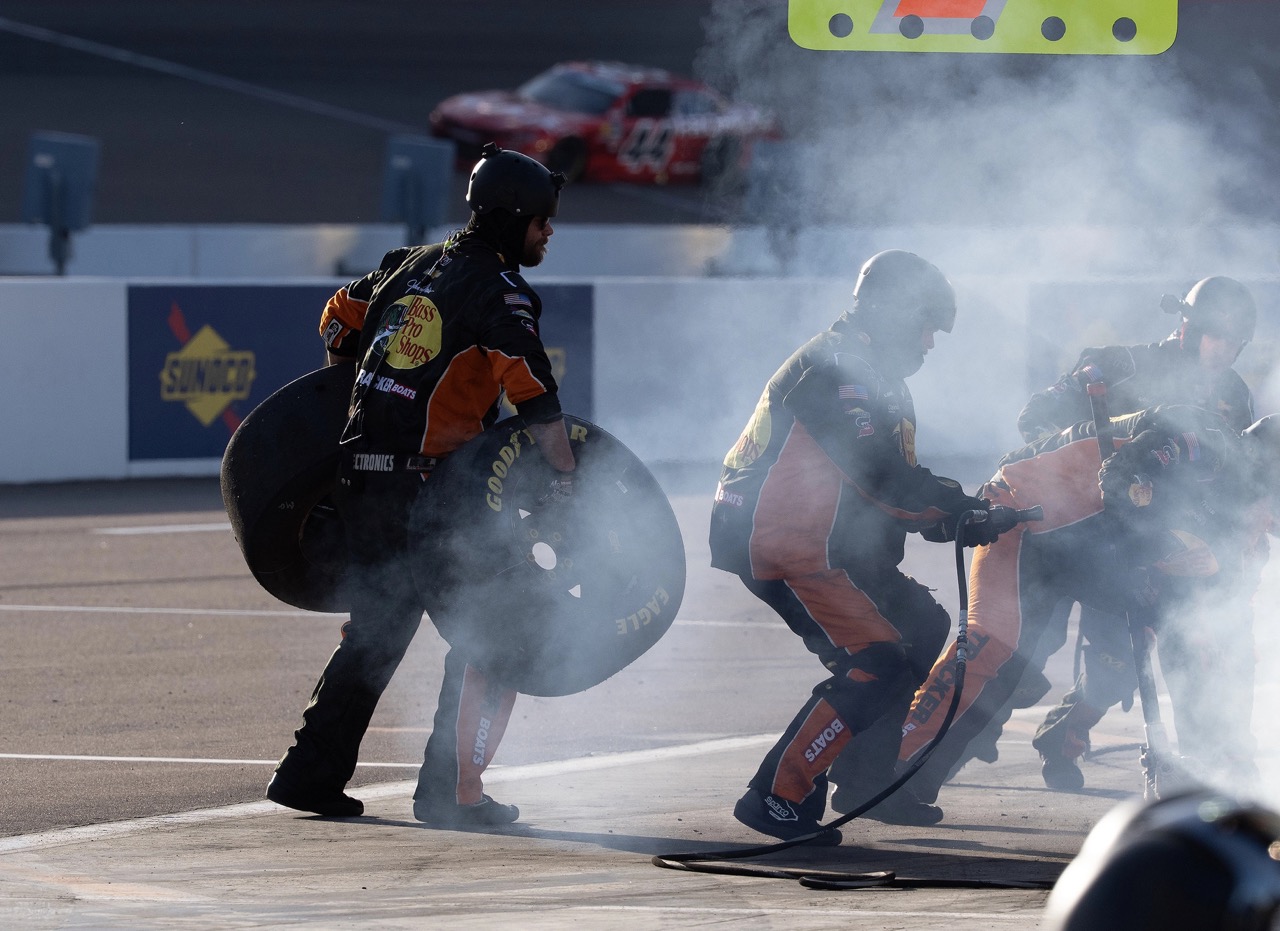
A racecar won’t go anywhere without an engine, which can be leased from a variety of engine suppliers. Chevy teams can choose between Earnhardt-Childress (ECR) or Hendrick; Roush Yates builds the Ford engines; and Toyota’s Xfinity engines are supplied by Joe Gibbs Racing. Costs vary between providers, but on average, one of these lease agreements is in the range of $800,000 for the season, or $24,242 per race.
The engine suppliers will drop off a motor for the teams the week before each race and pick it back up on Monday after the race. All that the team has to do is install the engine and remove it from the car. The engine suppliers will handle all chassis dyno testing and also send a group of engine tuners and specialists to the racetrack each weekend. In the event of an engine failure in practice or qualifying, spares are available to teams at the track.
If you ever see a team open the hood during a race, you will likely notice one or more people in firesuits that don’t match the rest of the team. These people are engine specialists employed by the engine manufacturer, and they are responsible for rectifying whatever issue the team is suffering from.
During the 2022 Xfinity Series race at Charlotte Motor Speedway, Noah Gragson’s engine lost a cylinder at the end of Stage 1. Below you can see John Kendrach and Jereme Jackson in Hendrick Motorsports firesuits assisting the rest of the team in Bass Pro Shops firesuits. Gragson’s engine was repaired, and the team finished 4th in the race.
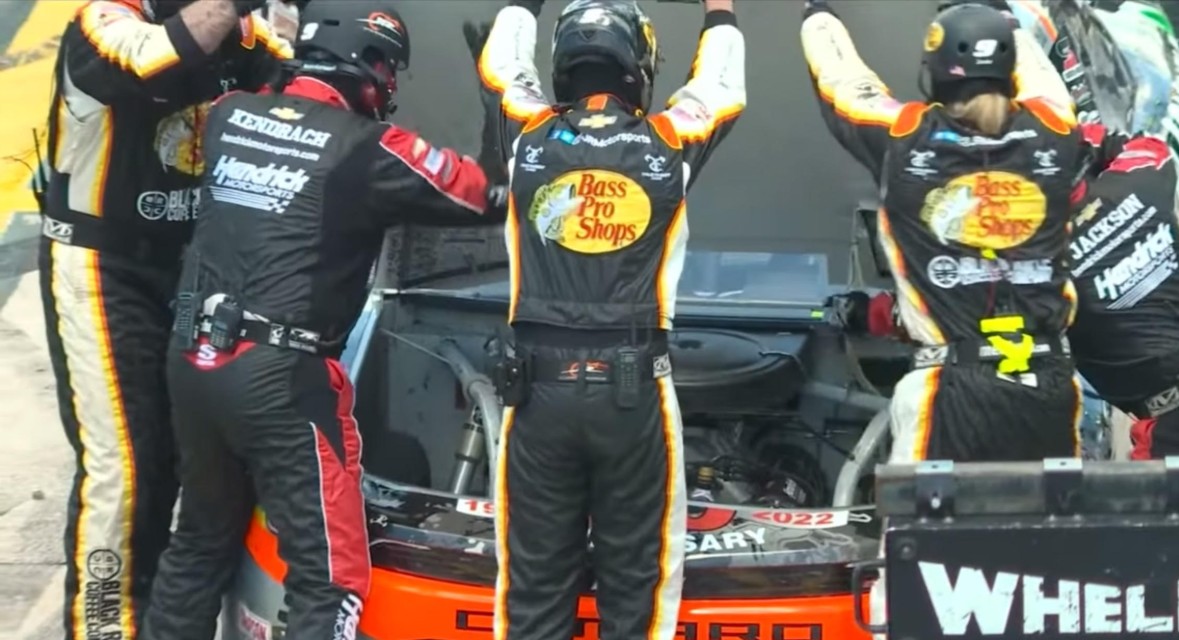
As a rule, small teams also rent their transmissions and rear-end gears through one of a multitude of suppliers. A weekend rental for a transmission and rear gear (with spares) costs about $425 for the gears and $1,500 for the transmission. An oval transmission will usually be raced twice per service, whereas a road course transmission is serviced every race. This brings the season cost to $14,025 for gears and $30,000 for transmissions, for a total of $44,025 or $1,335 per race.
Note: A new transmission costs around $12,000 new and a team will need to own at least five if they want to go the ownership route, in addition to servicing the transmissions themselves. This transmission from SRI Performance could be utilized by an Xfinity Series team at any intermediate racetrack.
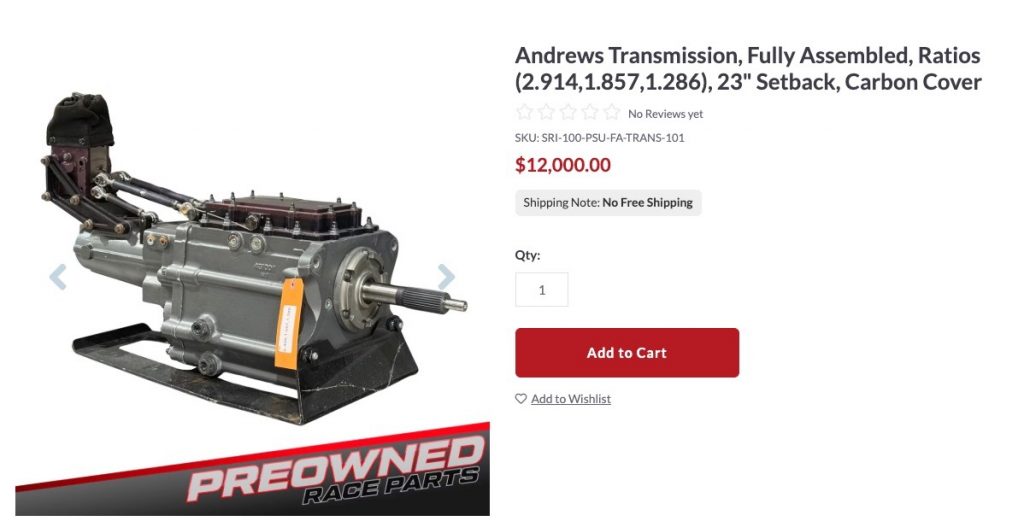
Like the engine and driveline, a racecar won’t go anywhere without tires. A set of Goodyear Racing Eagles costs roughly $2,500. The weekly allotment varies between 4 and 7 sets per weekend, depending on race length and tire degradation. For the entire season, teams will be allotted 188 sets of tires for a total cost of $470,000 or $14,242 per race.
(Funny side note: In the pre–Next Gen era, Xfinity teams could recoup some of this cost by selling tires to backmarker Cup teams. Unused tires would resell for about $1,000 a set, and scuffs would go for between $200 and $500 per set.)
Getting those tires and wheels to the track is no easy task either. Teams contract this service out to Champion Tire and Wheel. They will haul your pit box, tires, and wheels to each of the 33 races for a cost of about $95,000, or $2,875 per race. This may sound like a lot, but considering that the pit boxes weigh in at 3,000 to 4,000 pounds, it seems a lot more reasonable. Tires and wheels are much lighter at “only” 140 pounds per set, but they take up a significant amount of space at 24 cubic feet per set or 144 cubic feet for all of your sets on an average weekend. When you consider that they’re hauling 4,500 pounds of stuff over 50,000 miles, as well as loading and unloading it for you 33 times, the rate doesn’t seem that bad.
Smaller teams normally don’t have their own shock tuner on payroll. There are a number of shock service providers in the Mooresville, NC area that will either lease the team shocks or service the ones that the team owns.
The ownership route starts out around $400 per shock, or $1,600 per set, for initial purchase, and then $50-75 per shock for service. At a minimum, a team would need to own at least six sets of shocks for an initial cost of $9,600 and then $200 to $300 per race for maintenance, which works out to $8,250 for the season.
Leasing shocks costs around $800 per race and comes with one set of primary and one set of spare shocks. For the sake of simple math, let’s assume our hypothetical team leases its shocks and put the season cost at $26,400. The advantage of the lease route, besides having spares every week, is that it allows more customization. The shock builder typically has an array of shocks in inventory and will give you one that matches whatever shock curve you want, instead of charging you for a full rebuild.

Having all these parts is great, but you’re also going to need people to put your racecars together. Below is a list of the general pay scale for Xfinity series team members.
The industry standard for smaller teams is to hire crew members as 1099 independent contractors instead of W2 employees; therefore, the team does not have to worry about benefits and payroll taxes.
- Crew chief $100,000-$150,000
- Car chief $80,000-$100,000
- Mechanic $50,000-$70,000
- Hauler driver $60,000-$80,000
- Spotter $26,000-$33,000
Taking the average of these ranges and assembling a road crew consisting of a crew chief, car chief, hauler driver, three mechanics, and a spotter brings the yearly payroll to $494,500 or $14,984 per race plus per diem. Adding in three mechanics that only work in the shop would bump payroll costs up by $180,000. The total cost for the road and shop crew will be around $674,500, or $20,439 per race.
Generally speaking, crew members don’t work very well unless you feed them. There are a number of catering services that provide buffet-style meals for team members at the racetrack. They typically charge in the neighborhood of $40 per person per day. For a road crew of six people, that works out to $15,840 for the season or $480 per race. This service includes two meals per day for the crew members, either breakfast and lunch or lunch and dinner.
Per diem rates are typically $25 per day for a total season cost of $10,500. Some of the bigger teams go as high as $60 per day, which brings the cost up to $25,200. That’s not a lot of money, but it’s usually only to cover one meal and snacks. A Martinsville hot dog is only $2, so that $25 can go farther than you’d think.
Due to DOT regulations, hauler drivers can only drive for 10 consecutive hours before they must either rest or swap out with a co-driver. In 2025, there was a minimum of 13 races where having a co-driver was necessary due to logistical constraints. Co-drivers typically charge about $300/day, putting the bare minimum cost of hiring a co-driver in the neighborhood of $20,000 for the season.
Over-the-wall pit crew members are contracted out through a number of development firms. Pit crew rental costs generally about $260,000 for the season, including travel, or $8,125 per race.
All in, the cost for your human beings can be budgeted at $954,500 for the year, or $28,924 per race, less benefits and bonuses.
Your crew members will be required to hold a NASCAR license. The price of a license varies depending on the crew member’s position, but they are about $2,000 apiece. For a road crew of five employees, that would bring the cost to $10,000 for the season or $303 per race.
You will often hear broadcasters making reference to SMT data over the course of a race weekend. The SMT data provides real-time speed and line traces for each car on the track and is used to compare where your driver is gaining or losing time to the competition. A subscription to this data costs $16,500 for the year, or $500 per race.
Your racecar will need to be presented for inspection every week with a new splitter installed. These are sold by Piedmont Plastics for $277.40. Over the course of a season, you will spend $9,154 on splitters. Side skirts are also not reusable. A set of plastic skirts with a metal exhaust skirt costs $75, which adds up to a season cost $2,475.
Last but not least, after doing all of this work, your car will still need to be entered into the race. The Xfinity series entry fee is $2,229 per race or $73,557 for the season.
So far, we can calculate that our fixed costs add up to $2,527,951 for the season or $76,604 per race. Subtracting the $1,516,447 of income from the race purses leaves us with a $1,011,504 deficit for the year, or $30,651 per race, that needs to be filled by either sponsors or the driver.
It’s worth noting here that this hypothetical budget is relying on an extremely low headcount. We did not add any budget for PR reps or marketing staff. Those salaries are typically in the $60,000 per year range, or $1,818 per race, and would also need to be factored into the travel budget. Additionally, we only have eight employees who work directly on the racecars. Your crew members will be working very long days more often than not.
The premier small teams–think of the Sam Hunt Racing or Jordan Anderson Racing types– have around twelve to sixteen people per car, including marketing staff. This would increase the overall budget by around $240,000 to $480,000. Bigger teams like Joe Gibbs Racing and JR Motorsports have as many as thirty people per car.
Anyway, let’s go spend more money.
Here Are All Your Semi-Fixed Costs To Run A NASCAR Team

Once you’ve assembled your team, you have to get them on the track. Excluding Martinsville (x2), Darlington, Bristol (x2), Rockingham, and Charlotte (x2) the 2025 Xfinity Series schedule features 25 fly-away races. Some teams may drive to Atlanta, Daytona, and Talladega, but that’s only for the most extreme budgeters.
The majority of teams fly private at a cost of roughly $1,100/person/weekend. For a driver, crew chief, car chief, and three mechanics, that represents about $6,600 per race or $165,000 per season. Rather than book a lot of private airplanes, smaller teams often share a charter service like Victory Air (if you were curious. Spotters usually work all three series, and their travel is covered by their Cup team).
This may seem like a luxury, but let’s look at the other travel costs involved. At a minimum, you can expect the team to require four hotel rooms and two rental cars. A team that flies private will, except for West Coast races, arrive Friday morning and leave Saturday evening. That means the team will book the hotel rooms for a single night and the rental cars for two days. Assuming $300/night for hotels and $75/day for rental cars, that puts the weekend cost at $1,350.
A team that flies commercially will need to arrive on Thursday evening and leave on Sunday morning, meaning that they have three nights in the hotel and four days with their rental cars, putting the weekend cost at $4,200, or $2,850 more than the team that flew private. With a traveling crew of six people, the commercial flights would have to be $475 cheaper than the private ones to break even, not including the intangible factor of giving your team an extra two days at home. It’s also a significant headache to try and rearrange your entire team’s travel at the last minute in the event of a rainout.
We can roughly assume that the team’s travel bill for a race weekend averages out to around $8,100 for flyaway races, bringing the season total to roughly $202,500. Hotels for the drive-to races add $4,800, for a grand total of $207,300.
The racecar also has to make it to the track. During the 2025 Xfinity series season, team haulers will travel roughly 52,000 miles and spend about 800 hours going up and down the road. Assuming six mpg and an average diesel cost of $3.61, we can calculate that the annual fuel bill for the hauler will be about $31,000, or $940 per race. This, of course, does not include any routine maintenance or repairs on the hauler itself.
Consumables are going to be the next significant chunk of the budget that you need to contend with.
A set of brake rotors will cost you about $600. Brake rotors are typically a single-use item for short tracks and road courses and can run two races at intermediates. In 2025, there were sixteen high-braking races and seventeen low-braking races, which works out to about twenty-four sets of brake rotors for a season, at a cost of $14,400 or $436 per race. Brake pads follow roughly the same mileage guidelines at $1,250 per set for a season total of $30,000 or $910 per race.
Flushing the brake system with fresh fluid every race will cost another $120. All said and done, you can expect to spend around $48,360 on brakes for the season (not including spares), or $1,465 per race. That budget figure comes with the caveat that you are rebuilding your calipers in-house and not sending them out for service.
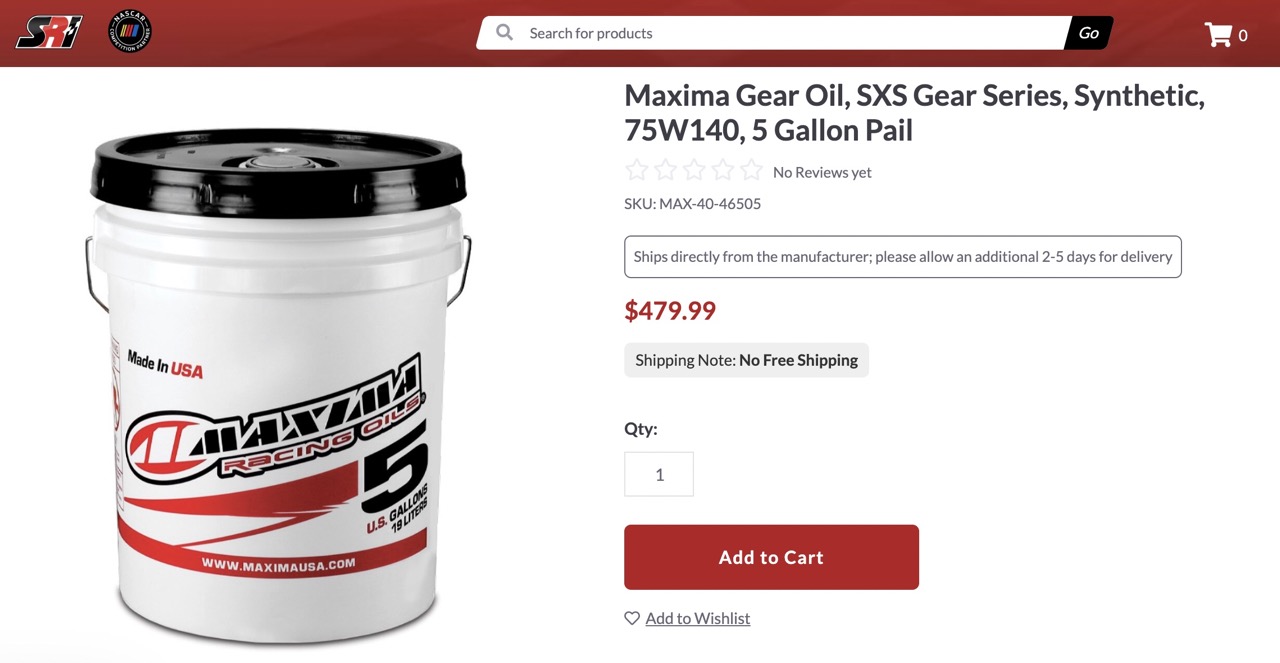
Gear oil and transmission fluid costs $96 per gallon, and the driveline will take just under one gallon per race, bringing your season budget to $3,168
Lug nuts cost about $1 apiece, and teams will use 3,760 of them during the season if they buy the full allotment of tires. Factoring in some spares, reglued sets, and ones that get used at the shop, you’re looking at about $4,000 per year or $120 per race in lug nuts.
You’ll also have to factor in a small chunk for simple consumables. Budgeting for 60 cases of rags, 25 cases of Brakleen, and 10 cases of SD-20 will cost you $3,300. The 50 rolls of assorted types and colors of tape will cost another $600. The list goes on and on. By the time you add up everything from paint pens to razor blades, you’ll be looking at about $6,000 for a year’s worth of miscellaneous consumables. Nuts, bolts, washers, rivets, silicone, and zip ties will run you out of another $12,000. All in, you’re looking at a total of around $18,000, which breaks down to $545 per race.
Adding up our semi-fixed costs comes to $311,828, which breaks down to $9,450 per race. Combining this with our fixed costs brings the new season total to $2,839,779 or $86,054 per race. Our deficit is now $1,323,332 for the season, or $40,101 per race.
The Variable Costs Of Running In NASCAR, Or How Your Team Goes Bankrupt
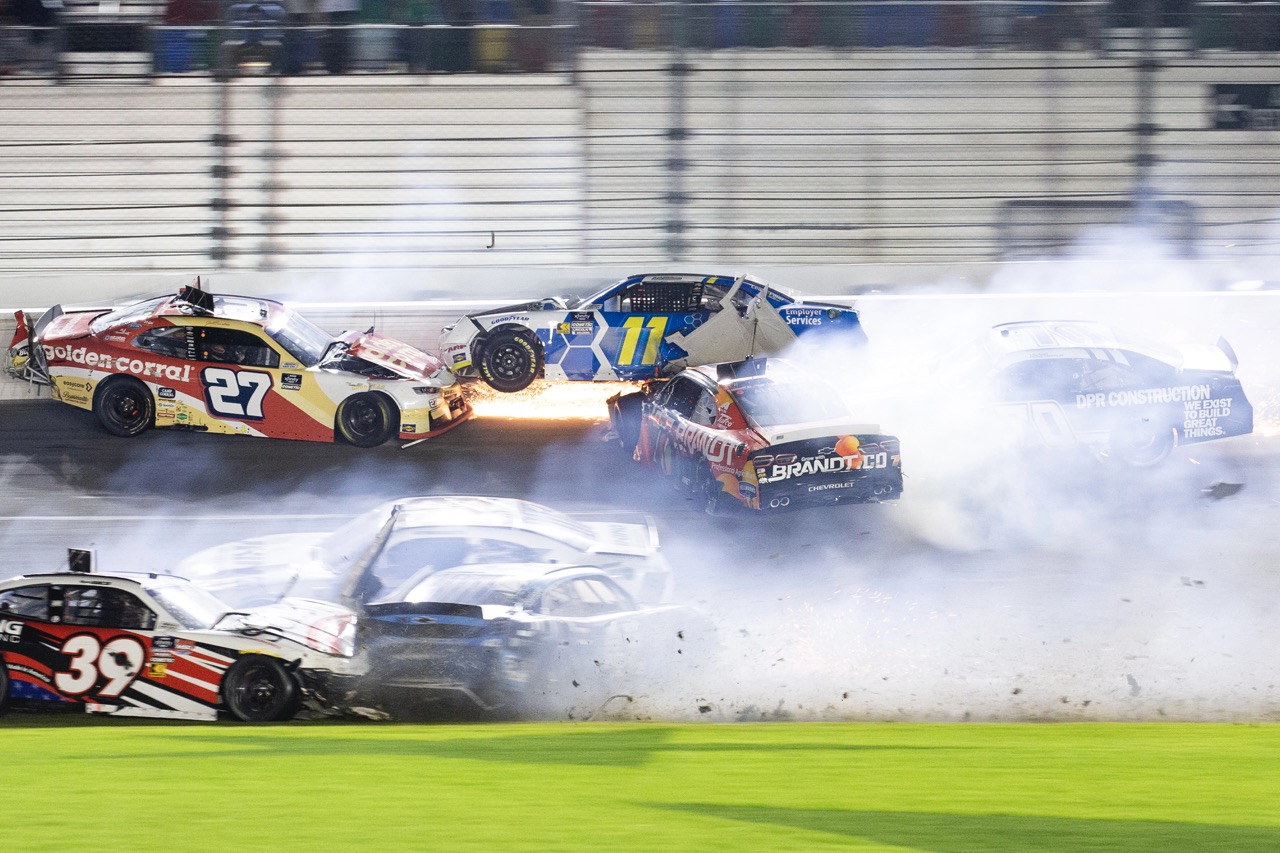
If you’ve managed to land some sponsorship, you’ll need to make sure that their logos get onto the racecar. A full car wrap retails for around $1,800, not including install, which is usually an additional $600. If the team runs a consistent paint scheme week to week, most races will not necessitate a full wrap, as non-damaged panels can be cleaned and used again.
Let’s pretend our hypothetical team runs the same scheme every week. We would need roughly twenty full wraps, which puts our season cost in the neighborhood of $36,000. Including installation, this would work out to $48,000. You could save some money by wrapping the cars yourself, but keep in mind that this will take two or three of your employees almost three hours to wrap the car, when they could be doing other, more mission-critical tasks. (I did not include the cost of paying a designer for the work of creating the scheme(s)). A front-running team will rewrap a car for every race, which costs around $79,200 for the season, but our hypothetical team is a bit thriftier.
A complete Xfinity Series body, not including windows, costs $10,600. The bigger teams will have an in-house fabrication department to hang bodies, and smaller teams will utilize one of several body shops in the Mooresville, NC area. The cost to hang a body, with all finish fab (paint, crush panels, ductwork, etc) is between $20,000 and $30,000, not including the body panels, depending on which shop the team goes to.

That may seem like a lot, but hanging a body is typically billed at about 125 labor hours. To do this in four eight-hour working days, a team would need to employ four full-time fabricators. A skilled fabricator will earn around $75,000, which would increase payroll by $300,000 for the year or $9,090 per race. The team would also need to invest in a surface plate that would be dedicated solely to body hanging, as well as numerous expensive pieces of measurement equipment.
Now, obviously, you don’t tear up a full body every week, but routine in-race damage (nose, tail, splitter/bumper bars, and crush panels) will typically cost $7,500 to repair. If by some miracle you managed to run a whole season without crashing, your body bill would be around $288,750. A moderate crash, or rough race, is colloquially referred to as a “doortops down” repair. Basically, everything below the windows needs to be replaced. These are fairly common after a road course or short track, even if the team manages to finish the race, and will easily cost in the $30-40,000 range for the body panels and their installation. If we factor in five of those over the season, we can roughly budget for our body bill to be about $463,750 for the year, or $14,053 per race if divided up over the year.
I’m excluding from our variable costs any wrecks that are severe enough to damage the chassis itself. Getting a clip replaced costs in the $10,000 to $15,000 range and takes the vehicle out of rotation for at least a month by the time it gets repaired and recertified.
Our variable costs will hopefully only add up to around $511,750 for the season, or $15,508 per race.
All in, our hypothetical Xfinity series team with nine employees is looking at spending $3,351,529 to go racing for the season, or roughly $101,561 per race. Subtracting income from race purses leaves us with a total deficit of $1,835,082, or $55,608 per race, that needs to be filled by either sponsors or the driver.
There are, however, three notable exceptions to this hypothetical budget that you may have noticed. The first is the cost of your building and the utilities to go along with it. This can vary wildly depending on whether or not the team purchases an existing building, builds a new one, or rents space from someone else with a shop. I didn’t feel like I would be able to accurately represent that number, so I have left this out, but it will not be an insignificant cost.
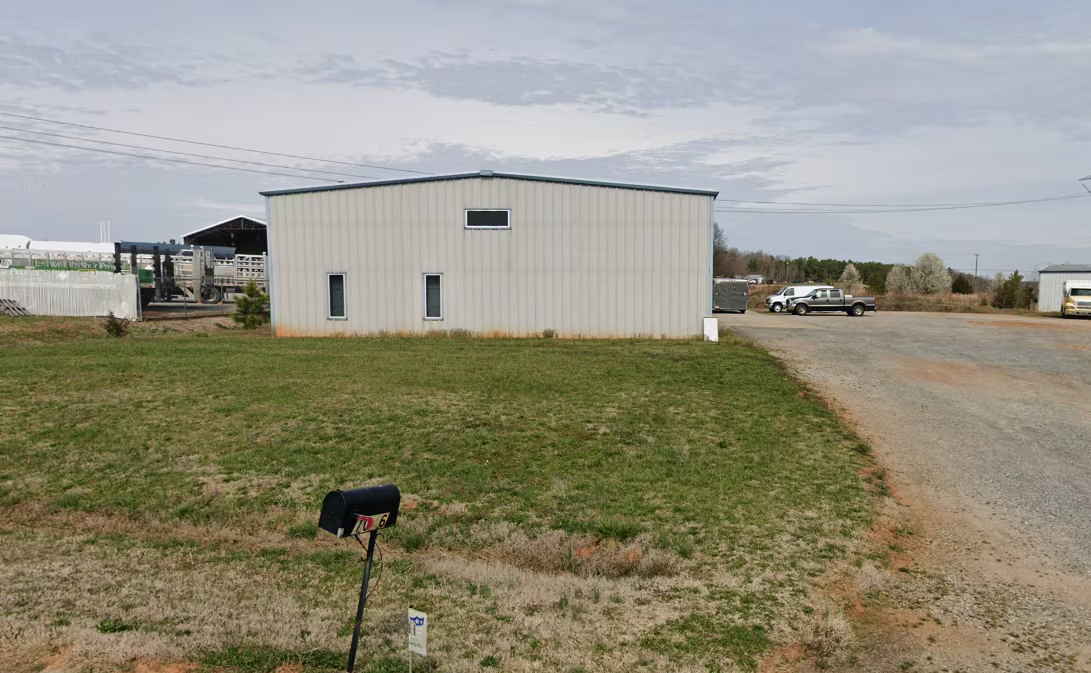
The old Cope Family Racing shop is on the smaller side at 8,750 square feet, and is listed for rent at $122,500 per year. This translates to $10,208 per month or $3,712 per race not including utilities. A larger shop at 20,000 square feet, perfect for a two-car team, is currently listed for sale at a price of $3,400,000.
The second one is parts. For most of its history, the Xfinity Series was sustained by used parts from the Cup Series. Since the inception of the Next Gen car, this market has been drying up quickly. The majority of anything worth buying has been auctioned off already and is currently in circulation amongst Xfinity Series teams. As these parts get crashed or worn out, there is no more steady supply of cheap used parts. Once they’re gone, the only option will be to race brand new parts that teams either purchase from outside suppliers or manufacture themselves.
All of these numbers also assume that your equipment is owned outright. If any debt was taken on to start the team, those payments will also be quite significant. Without getting too far into the minutia, we can ballpark the startup costs by looking at a few of the heavy-hitter items.
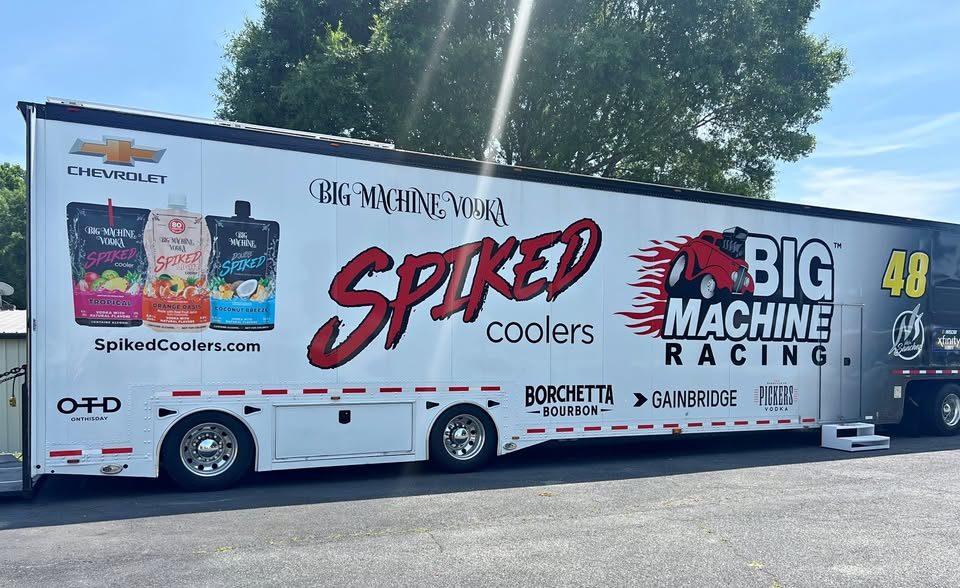
The biggest single item will be the hauler. Big Machine Racing recently listed its 2001 trailer with a 2016 Kenworth tractor for $300,000. Wood Brother Racing also has its (much newer) trailer listed by itself for $350,000.
It’s a safe bet that your hauler will be in the $300,000 to $500,000 range.
Next, you’ll need racecars. A properly equipped mid-pack team would have a minimum of seven chassis in its rotation: two short track, two intermediate track, two road course, and one superspeedway. The bigger teams will have around twelve cars, and they will be brand new. If you buy your cars as rollers, complete with body and suspension, less a driveline and seat, a 2015 to 2020 Xfinity chassis should cost around $35,000. Newer chassis will be sold for closer to $50,000, but may not come with any suspension components.
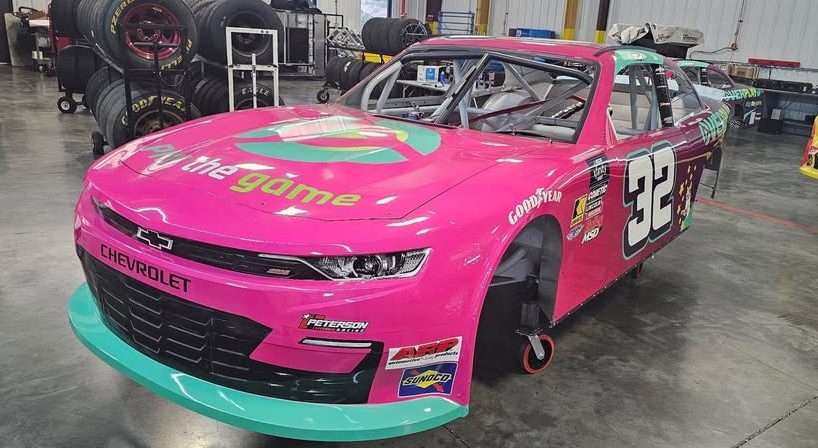
Somewhere in the $250,000 range should be reasonable to obtain enough cars to get you going. Your team will also need a pull-down rig to be able to properly set up the racecars. A new Mittler Bros pull-down rig retails for $97,500, but even a used one would set you back somewhere around $50,000.
A spending spree in the range of $800,000 to $1,000,000 should be enough to get you off the ground with most of the equipment and spare parts that you need.
In Conclusion
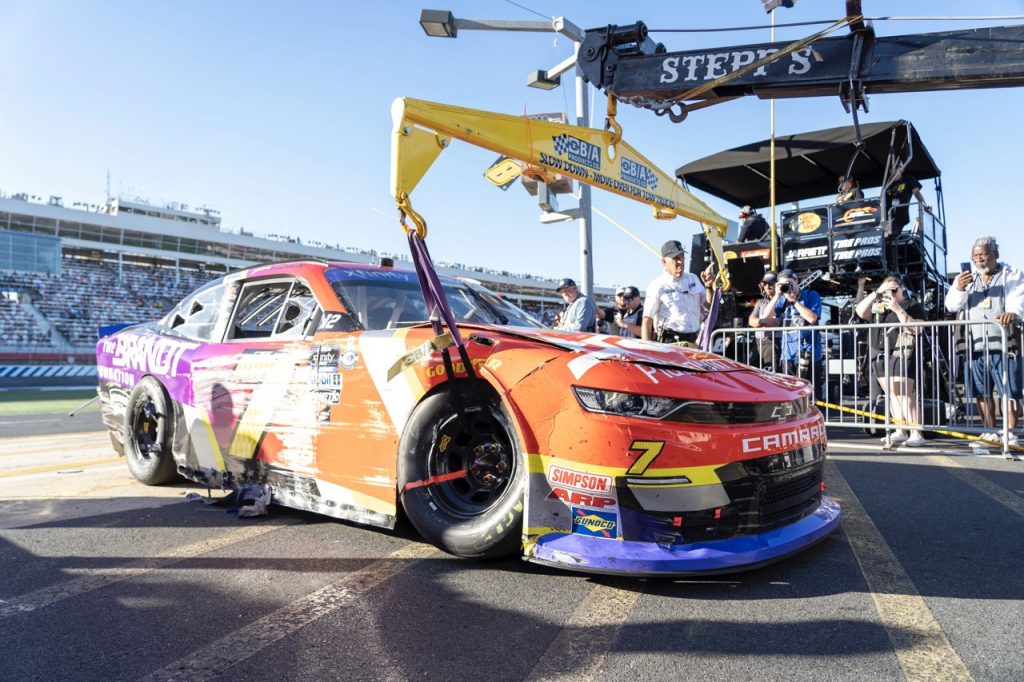
All said and done, an operating budget of $4,000,000 per year, $121,212 per race, should be considered as the bare minimum to run a sustainable mid-pack Xfinity Series race team.
A budget in that range leaves enough money to cover our fixed, semi-fixed, and variable costs discussed earlier, while also allotting $648,471 for rent or mortgage costs, utilities, parts, and covering the startup investment.
Even on this bare bones budget, our hypothetical race team will need to find at an absolute minimum $2,500,000 per season, $75,757 per race, in either sponsorship or driver funding, to keep the lights on.
There still is not a lot of wiggle room in this budget, and the team will be run extremely lean on the personnel side. A few too many crashes or mechanical issues, and our team will be out of money faster than Xfinity’s eponymous high-speed internet.
Top graphic image: DepositPhotos.com



